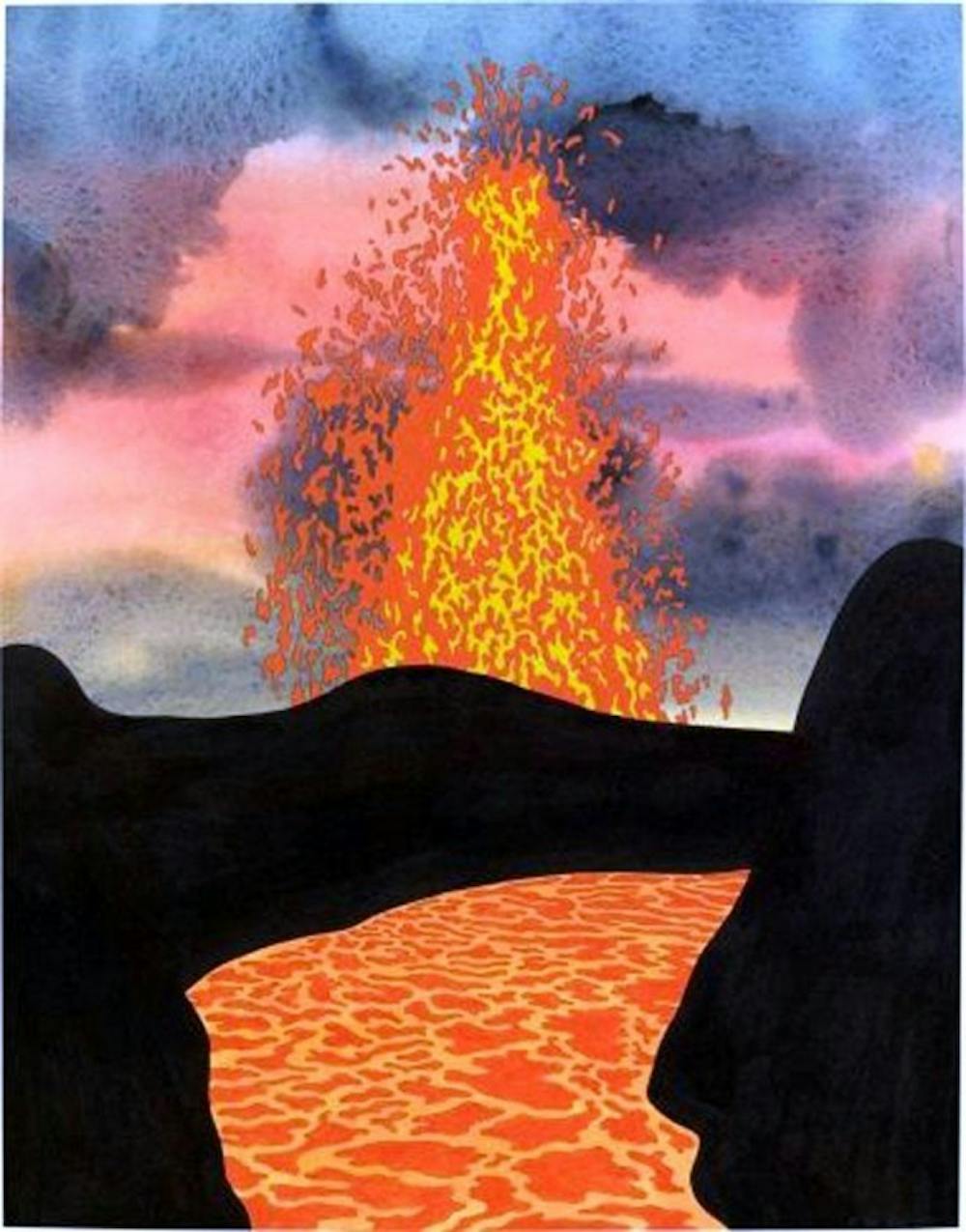The Albright-Knox Art Gallery is more than just a Queen City jewel; it is well respected on a national and international level for its permanent collection of modern and contemporary art, as well as its propensity for bringing in an ever-changing, impressive rotation of original and/or highly sought-after exhibitions.
The Ken Price exhibition Slow and Steady Wins the Race, Works On Paper, 1962-2010 is currently on display at the gallery until Jan. 19. It stands out as the must-see art exhibition in the city right now.
Price is renowned for his work on the West Coast, and his close relationship with the land and culture of the Southwestern United States is extremely evident in his work. Yet it is his connection to this area that makes him an interesting selection for an exhibition in Buffalo. Price earned his Master's of Fine Arts in ceramics at Alfred University, just under 100 miles away from UB.
"He really had no connection to Buffalo, but the Alfred connection is an interesting one," said Doug Dreishpoon, the chief curator for Albright-Knox. "If you were thinking about pottery [at the time], Alfred was probably one of the best places. He left L.A., but he was so hell-bent to get out of Alfred as soon as he could, probably because it was colder. It was a huge shock - he finished the whole program in a year. [At Alfred], he opted to be less traditional."
Price specialized in sculpture, so this exhibition is a rare opportunity to experience a different side of his artistic abilities. It features more than 60 works drawn by Price along with other interesting features in a gallery section called "Friends of Ken Price," which displays the work of other artists who made their name alongside Price during the 1960s.
Among the supplemental works that the gallery has displayed as part of the collection is a magnificent set of recordings done by Charles Bukowski, the famous poet whose body of work is thoroughly represented in UB's Poetry Collection. These recordings consist of poems from Bukowski's 1995 collection, Heat Wave, which featured serigraphs done by Price.
The Fine Art Collection at Albright-Knox houses over 6,500 collected works, many of which aren't regularly on display. The works rotate in and out of display to allow for new experiences with the collection over multiple visits. Students and those interested in the collection can view any of the work online by searching for a particular piece within the Albright-Knox website.
Features on the site include audio descriptions of individual works, listings for new acquisitions to the collection and written descriptions that assist viewers in their attempt to take in all of what each masterpiece has to offer.
Choosing the "best" from the collection is nearly impossible, but any regular at the gallery can likely tell you that there are a few works they always have to stop at for a little longer than the rest; there's something there that never gets unraveled or explained - something beautiful. Here are my top five favorites, a group of paintings that continue to move me with each visit to the Albright-Knox.
Work:Convergence
Artist:Jackson Pollock
Year:1952
Display:Knox building
Pollock's work is pure expression. Characterized and criticized in the past for lack of "real" craftsmanship or an apparently childish technique, it is in fact Pollock's genius technique that allowed him to break the mold for what was considered beautiful or meaningful in his time. His splatters replace strokes, and the realism of older styles is replaced with a frenzy of chaotic dribbles and whips across the canvas. It is entirely original. In post-WWII America, Pollock reinvented art as an outlet for unexpressed emotion; with no real way to depict the world exactly as he "saw" it, he shared how he felt and revolutionized what visual artists could do with paint. A favorite activity for first-time viewers of the piece is to find a matchstick that Pollock dropped into the paint - it's not as easy as you think.
Work:La Source De La Loue
Artist:Gustave Courbet
Year:1864
Display:Currently not on display
In contrast with Pollock's expressionist work is this very ominous piece by Courbet, who is often considered the father of realism. Courbet removes human presence from the scene here while creating a point of view that puts the viewer directly at the mouth of a dark cave. Left alone, the viewer is forced to confront his or her own fear in the face of nature's dark side.
Work:La Jeune Bonne (The Servant Girl)
Artist:Amedeo Modigliani
Year:1918
Display:Currently not on display
Modigliani is most famous for his portraits and faces (particularly his nudes), and this work really testifies to his ability to "see" people. The servant girl's role in society is depicted in her dress and demeanor, but "Modi" reveals a glow in her skin and a blush on her cheek that tells us something about her character that reaches deeper than society's construction for her - something only he saw. Modigliani's signature oval eyes and long neck figures should be noted here - an influence he drew from very old styles of sculpture from Africa and elsewhere.
Work:La Musique
Artist:Henri Matisse
Year:1939
Display:Knox building
In the loose flow of Matisse's work is a rigid structure. Again, many would call the artist's stroke here something that a child could replicate, but there is meticulous planning in Matisse's apparent free-flowing style. The work leaves a refreshing and satisfied feeling in the viewer with its burst of color and harmonious balance - something Matisse strove to achieve throughout his career.
Work:La Toilette
Artist:Pablo Picasso
Year:1906
Display:Knox building
The Albright-Knox is home to several works done by the man many consider to be the "greatest of all time," so it's entirely fitting to feature him in our "best of" list. This work is especially interesting for the transition it shows in Picasso's career. The use of color marks a shift between the artist's "Blue" and "Rose" periods. Some believe the women in the painting are actually the same woman (Picasso's mistress) shown in two different ways. His depiction of her draws one influence from Roman sculpture and Ancient Egyptian art in the other. Her full dress in one view and nudity in the other also suggests some ambiguity in the relationship they had or the way in which Picasso viewed her personality at different times.
email: arts@ubspectrum.com





